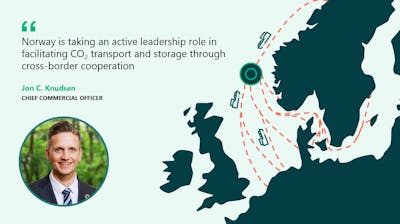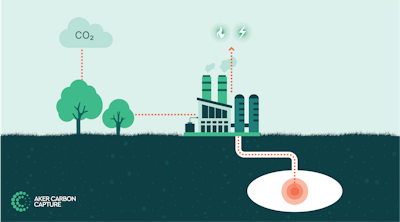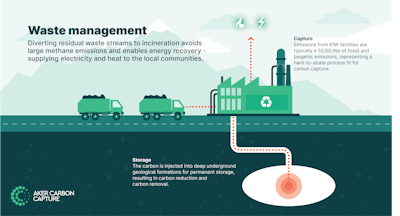Introduction
From November 7 until November 18, 2022, the 27th Conference of the Parties to the United Nations Framework Convention on Climate Change (COP27), took place in the Egyptian coastal city of Sharm el-Sheikh. Aker Carbon Capture had several representatives actively participating in multiple events and it is clear CCUS has never been higher on the agenda at COP exemplified by many of the side-events and general conversations. This edition of COP called for substantial action on mitigation, adaption, and loss & damage across the climate agenda while also emphasizing concrete plans for carbon markets and overall heading of the energy transition.
Background
For two weeks, COP27 held high-level and side events, key negotiations, and press conferences, hosting more than 100 Heads of State and Governments, over 40,000 participants and numerous pavilions demonstrating climate action around the world and across different sectors. A Key task for COP is to review the national communications and emissions inventories submitted by Parties. Based on this information, COP assesses the effects of the measures taken by Parties and the progress made in achieving the ultimate objective of the Convention. Central to the agenda are prior expectations for nations to deliver updated Nationally Determined Contributions (NDC’s) to stay consistent with the 1.5 degrees Celsius Paris Agreement Goal.


Main Objectives at the Conference
There were many objectives and related discussions at COP27, some of which stretched into overtime when the conference had formally closed its doors. These are some of the highlights:
- Carbon markets – Strong surge in voluntary initiatives and work on the Paris Agreement Article 6 which provides principles for how countries can pursue voluntary cooperation to reach climate targets, although this year’s talks made limited moves on forming a new UN carbon crediting mechanism and will have no formal say over the largely unregulated Voluntary Carbon Market. Greater scrutiny over the integrity of credits was emphasized.
- Energy transition – Strengthening country ambitions backed by specific announcements such as updated NDC’s, however commitments still fall below the need.
- Heavy industry – Significant steps forward to decarbonize the cement industry. CCUS is central to decarbonize cement as it is a clear example of a “hard-to-abate” industry and is reflected in the intentions of the First Movers Coalition.
- Finance – Scaling private finance will be critical to reaching the $3.4Tn required for mitigation, with public finance playing a crucial role to unlock it. Funding remains a critical component to employ decarbonization technology now and is particularly dependent on support-schemes by industrial nations towards developing countries.
- Climate standards – Increasing climate target expectations and providing clarity on net-zero standards and climate-related disclosure. Bolstering national climate goals and using readily available technology is crucial to meet those goals.
How did the Conference address the current CCUS Momentum?
“CCUS was certainly high on the agenda” is one of the main take-aways from our representatives at COP27. Like many other climate-related forums and conventions, CCUS is experiencing a surge in airtime and is on many actors’ lips. There is no longer a question of whether we should go for this solution, but rather how do we enable the full-scale commercial acceleration of the industry. This notion has likely been contributed to by the International Energy Agency “Net Zero by 2050: A Roadmap for the Global Energy Sector” publication as well as the Intergovernmental Panel on Climate Change scenario reports. CCUS remains fundamental to decarbonize industry, especially hard-to-abate industries such as the cement industry and waste-to-energy facilities. The First Movers Coalition, a global initiative utilizing the purchasing power of private companies to decarbonize, launched the “cement segment” at COP27 where carbon capture is highly attractive. The initiative now features over 67 members from top global corporations. Vattenfall is one of those companies, who are, as early adopters, and an early member in the FMC, committing to decarbonize the cement sector. Vattenfall is also joined by companies such as Holcim, who praised the initiative due to its “business driven” approach.
See the full interview with Vattenfall here: COP27 day 2 – YouTube
See the full interview with Holcim here: COP27 day 4 – YouTube

On the right: Annika Ramsköld, Head of Sustainability, Vattenfall

On the right: Jonas Gahr Støre, Prime Minister of Norway
Conclusion
COP27 once again reaffirmed the urgency the worldwide community is presented with on climate issues. All current discussions and topics call for immediate action which emphasizes using the solutions we currently have. CCUS is one of those solutions where projects can be implemented and realized within a short time. Moving forward, bold action is required to ensure progress on devising new carbon market mechanisms, deliver long-awaited climate finance to incentivize early action, and accelerate the energy transition. CCUS plays an essential role in reaching our climate goals and as timelines draw closer, the need to act now is paramount.
Would you like to experience COP27 for yourself through the eyes of key representatives at Aker Carbon Capture? Check out our full day-by-day coverage of the first week highlighting the most important aspects of carbon capture and its role in energy transition here: Aker Carbon Capture at COP27

Policy Advisor


